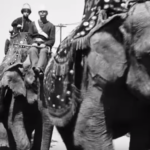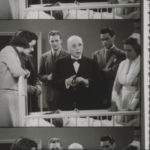25 Films Added to US National Film Registry
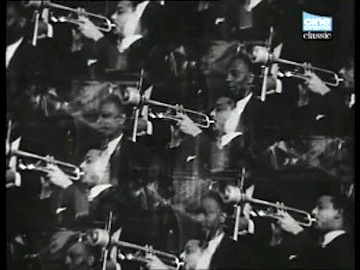
Black and Tan
The Library of Congress has made its annual addition of 25 motion pictures to the National Film Registry of the Library of Congress, bringing the listing to 675 films dating from 1894 to 1997.
Under the terms of the National Film Preservation Act, the Librarian of Congress annually adds to the listing films that are at least 10 years old and that epitomize and promote public awareness of America’s cinematic heritage. The Librarian takes recommendations from members of the National Film Preservation Board, which provides counsel on national preservation planning policy, and the Library’s film staff, as well as thousands of members of the public who can nominate titles through the NFPB’s website. (The Library even provides a long list of suggestions: American films not yet added.)
Of particular interest in this year’s selections was an NFPB emphasis on film shot on film. It said in a statement: “The National Film Preservation Board focused much of its attention this year on the recognition of photo-chemical film as a distinct medium. Emerging digital technologies offer many alternative opportunities, but the board encourages the preservation of film on film. Film remains the best existing archival medium and the board encourages archives and rights-holders to continue to preserve titles on film as they have done in the past.” In emphasizing film-on-film, the Board echoes a key film-related concern of the Library of Congress, which in 2013 determined that 70 percent of the nation’s silent feature films have been lost forever and only 14 percent exist in their original 35 mm format.
The films named to the registry this year include Hollywood blockbusters, documentaries, silent movies, animation, shorts, independent and experimental motion pictures. They bring the number of films on the registry to 675, which certainly far from exhausts the potential for additions, because the Library’s moving-image collection runs to some 1.3 million items.
Some of the films will be known already to millions of cinema-goers, others less so, particularly those that date from the earliest years of film. Added this year, for example, is The Sneeze, recorded in 1894 by Thomas Edison’s team of inventors; it is the oldest surviving copyrighted motion picture. Also added are films that pioneered the earliest cinematic techniques, such as Dream of a Rarebit Fiend (1906) and Disney’s 1937 feature, The Old Mill.
Many titles named to the registry have already been preserved by the copyright holder, the filmmaker or archives. In cases where a selected title has not already been preserved, the Library of Congress state-of-the-art Packard Campus for Audio Visual Conservation ensures preservation, either through the Library’s motion-picture preservation program or through collaborative ventures with other archives, motion-picture studios and independent filmmakers. At the Packard Campus, the Library acquires, preserves, and provides access to the world’s largest and most comprehensive collection of films, television programs, radio broadcasts and sound recordings —more than 7 million items.
Here, following a list of 2015 selections, are edited versions of the Library’s descriptions of this year’s Registry additions.
- Being There (1979)
- Black and Tan (1929)
- Dracula (Spanish language version) (1931)
- Dream of a Rarebit Fiend (1906)
- Eadweard Muybridge, Zoopraxographer (1975)
- Edison Kinetoscopic Record of a Sneeze (1894)
- A Fool There Was (1915)
- Ghostbusters (1984)
- Hail the Conquering Hero (1944)
- Humoresque (1920)
- Imitation of Life (1959)
- The Inner World of Aphasia (1968)
- John Henry and the Inky-Poo (1946)
- L.A. Confidential (1997)
- The Mark of Zorro (1920)
- The Old Mill (1937)
- Our Daily Bread (1934)
- Portrait of Jason (1967)
- Seconds (1966)
- The Shawshank Redemption (1994)
- Sink or Swim (1990)
- The Story of Menstruation (1946)
- Symbiopsychotaxiplasm: Take One (1968)
- Top Gun (1986)
- Winchester ’73 (1950)
Being There (1979)
A simpleton gardener (Peter Sellers) who knows the outside world only through television blunders his way to becoming the confidant of a dying billionaire industrialist (Melvyn Douglas, in an Academy Award-winning performance) who happens to be a close adviser to the U.S. president (Jack Warden) who, along with other leaders, mistakes the gardener’s gardening advice as metaphors for political policy and life in general. Novelist Jerzy Kosinski and screenwriter Robert C. Jones adapted Kosinski’s 1971 novel; Hal Ashby directed; Sellers delivered an Academy Award-nominated performance alongside Shirley MacLaine. Film critic Roger Ebert admired the film for “having the guts to take this totally weird conceit and push it to its ultimate comic conclusion.”
Black and Tan (1929)
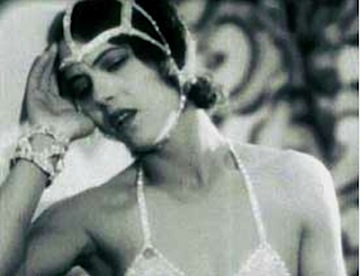
In one of the first short musical films to showcase African-American jazz musicians, Duke Ellington portrays a struggling musician whose dancer wife (Fredi Washington in her film debut) secures him a gig for his orchestra at the famous Cotton Club. Directed by Dudley Murphy, who earned his reputation with Ballet mécanique, a masterpiece of early experimental filmmaking, Black and Tan reflects the cultural, social, and artistic explosion of the 1920s, the Harlem Renaissance. Murphy’s other registry titles are St. Louis Blues (1929), another musical short, and the feature The Emperor Jones (1933) starring Paul Robeson. Washington appeared with Robeson in Emperor Jones and is best known for her role in the 1934 version of Imitation of Life.
Dracula (Spanish language version) (1931)
When talkies arrived, American studios began shooting foreign-language versions for international and non-English-speaking domestic markets, generally at the same time they filmed English versions. Dracula is a famous and curious example: while Tod Browning shot his English version of the Bram Stoker classic with Bela Lugosi, a second crew, with different director and stars, shot at night on the same sets. The longer Spanish version is now considered superior to the English one. George Melford (best known for his Valentino vehicle, The Sheik), directed, with Carlos Villarías, Lupita Tovar, Barry Norton, and Pablo Alvarez Rubio.
Dream of a Rarebit Fiend (1906)
Based on Winsor McCay’s popular New York Evening Telegram comic strip of 1904-1914, Edwin S. Porter’s 7-minute fantasy comedy evoked the hallucinatory dreams of a top-hatted swell (Jack Brawn) who gorges on Welsh rarebit and is beset by dancing furniture and mischievous imps. Porter used a spinning camera and moveable set pieces, along with multiple exposures, stop-motion, and matte paintings. Porter joined Thomas Edison’s company in 1899 and advanced the special effects pioneered by Georges Méliès. The Museum of Modern Art Department of Film has preserved the film.
Eadweard Muybridge, Zoopraxographer (1975)
Created over the course of a decade by Thom Andersen, a onetime UCLA film student, this documentary delves into the personal and professional struggles of the man whose pioneering studies and concept of persistence of vision led to the development of motion pictures. The film examines the philosophical implications of Muybridge’s sequential photographs, or zoopraxographs, of animal locomotion. When PBS declined the completed piece, Andersen sold “one of the best essay films ever made on a cinematic subject” (Jonathan Rosenbaum Chicago Reader) to New Yorker Films, that launched his career. The UCLA Film & Television Archive, with Andersen, has preserved the film.
Edison Kinetoscopic Record of a Sneeze (1894)
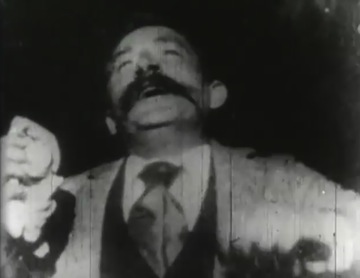
One of the earliest film recordings and the oldest surviving copyrighted motion picture is commonly known as Fred Ott’s Sneeze or The Sneeze. W.K.L. Dickson, who led Thomas Edison’s team of inventors, took the images of fellow engineer Ott enacting a snuff-induced sneeze. In March 1894, Harper’s Weekly magazine, published a sequence of still images taken from the film, which became synonymous with the invention of movies even though it was not seen as a moving picture until 1953 when 45 frames were re-animated on 16mm film. The full 81 frames that Harper’s published weren’t seen as a movie until 2013 when the Library of Congress made a 35mm film version. And here’s a revelation: In the complete version, Fred Ott sneezes twice.
A Fool There Was (1915)
The phenomenal success of this film, based on a Rudyard Kipling poem and a subsequent play, launched an unprecedented media blitz around its star, then-unknown Theda Bara. She and her swashbuckling lines, such as “Kiss me, my fool,” was promoted as “the woman with the most beautifully wicked face in the world” and became filmdom’s quintessential “vamp.” Women, Bara said, “see in my vampire the impersonal vengeance of all their unavenged wrongs.” In four years, Bara made 40 films that established a new genre and helped Fox become a leading studio, but only one other of those films survives, along with two Bara made during an attempted mid-1920s comeback. Preserved by Museum of Modern Art Department of Film.
Ghostbusters (1984)
A touchstone of cultural reference, and a loving homage to earlier wacky horror comedies from Abbott and Costello, Bob Hope, and others. Three lapsed science academics (Bill Murray, Dan Aykroyd and Harold Ramis) ferret out ghosts using clever publicity and customer recommendations.
Hail the Conquering Hero (1944)
Preston Sturges satirizes the worship of war heroes and mothers during wartime with “sharpness of verbal wit and the vigor of visual expression” while tempering “irony with pity” (Bosley Crowther, New York Times). Nominated for an Academy Award for best original screenplay, it follows the foibles of a would-be war hero dismissed from active duty because of chronic hay fever and enlisted by a group of Marines to return home as the war hero that he has pretended to be in letters to his mother. Sturges spoofs corruption in small town politics as well as idolization of the military and “restores to American film a sense of social satire that I find equaled only … in Chaplin’s films” (André Bazin).
Humoresque (1920)
In Frank Borzage’s great screen success, Yiddish Theatre actress Vera Gordon provided a sympathetic portrayal of the lives of immigrant Jewish refugees from Russian massacres, inspiring Hollywood to produce many other films set in the Lower East Side’s tenements. Borzage sympathetically treated faith and love with solemnity that admirer Martin Scorsese has commented “makes him so unfashionable now.”
Imitation of Life (1959)
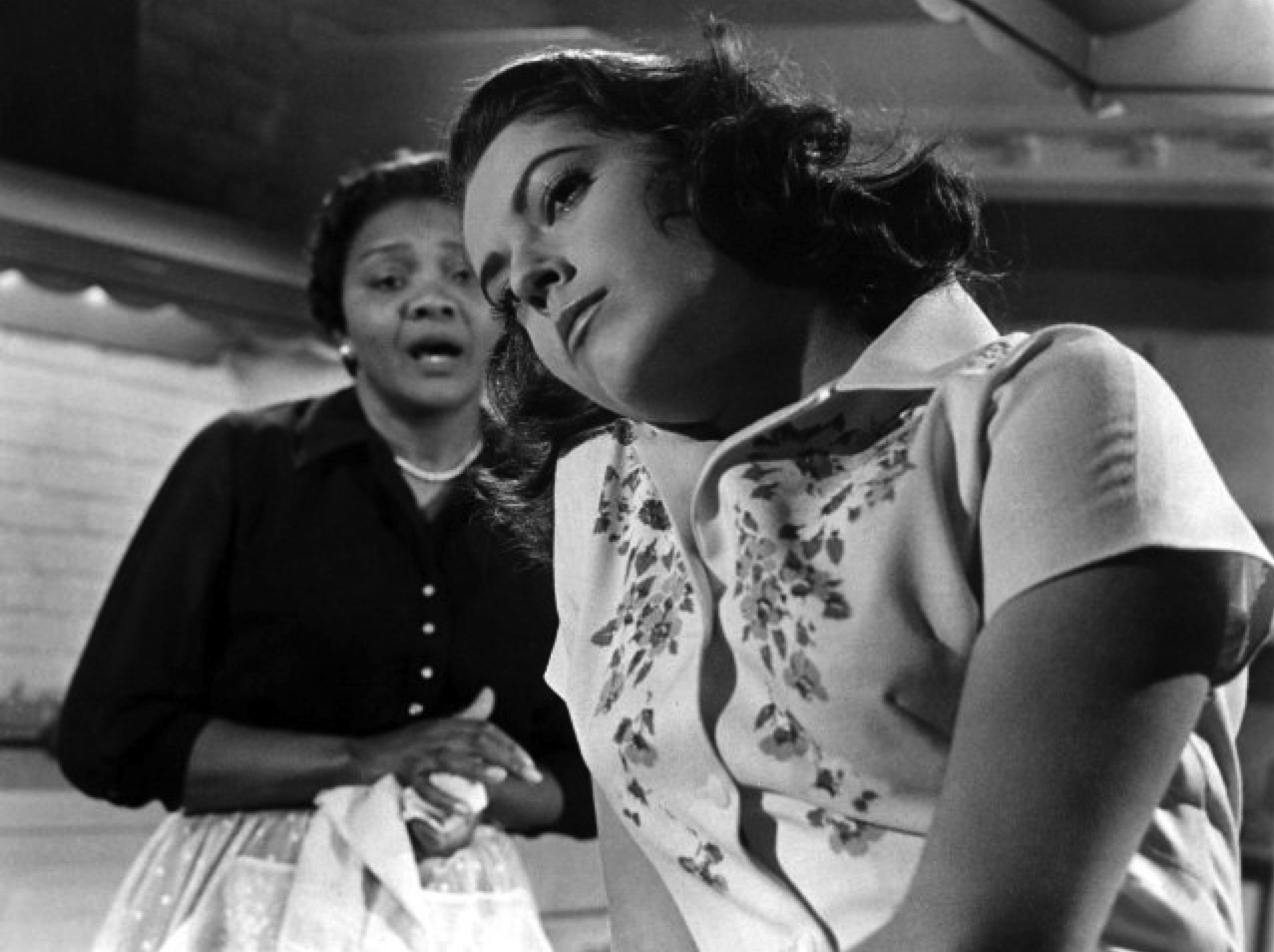
Susan Kohner and Juanita Moore. Courtesy Everett Collection.
Douglas Sirk domestic melodrama, marked by stylized interiors, use of mirrors, exquisite use of primary colors, and camera angles that convey emotion and mood. It is among glossy, flamboyant “women’s picture” melodramas that Sirk, producers Ross Hunter and Albert Zugsmith, cinematographer Russell Metty, and composer Frank Skinner made for Universal in the 1950s. Despite lurid plots, the films’ emotional impact on audiences reaped box-office bonanzas for the studio. Imitation of Life was Sirk’s last American film, and was based on a Fannie Hurst novel about two mothers (one white and one African-American) and their daughters (one white and one who wishes to pass for white). Sirk’s 1959 version (with Lana Turner and Juanita Moore as the mothers) offers a telling contrast to the more restrained melodramatic style used by John Stahl in the 1934 version (previously selected for the registry), starring Claudette Colbert and Louise Beavers.
The Inner World of Aphasia (1968)
In an empathic, often poetic medical-training film, co-director Naomi Feil portrays a nurse who learns to cope with aphasia. Feil, a social worker whose career has focused on communicating with language-impaired patients, produced this film and dozens more with her husband Edward Feil. In the film, the patient’s inner thoughts are heard through voice-over as she struggles in frustration to overcome her disability. The film is still being screened for its innovative artistry.
John Henry and the Inky-Poo (1946)
The legend of the African-American folk hero John Henry began to appear in print in the early 20th century, but emerged early on as a popular folk song. He was said to have worked as a “steel-driving man,” hammering a steel drill into rock and earth to build tunnels and lay track. In a competition against a steam-powered hammer, Inky-Poo, John Henry won but collapsed and died, hammer in hand. Ebony magazine praised this work by stop-motion animation pioneer George Pal as the first Hollywood film to feature African-American folklore in a positive light and to treat its characters with “dignity, imagination, poetry, and love.” Preserved by the UCLA Film & Television Archive.
L.A. Confidential (1997)
Curtis Hanson’s suspenseful adaptation of a James Ellroy novel teams three seemingly incompatible cops (Kevin Spacey, Russell Crowe, Guy Pearce) who send a corrupt police department and political machine catapulting towards a virtuoso choreographed shootout. Cinematographer Dante Spinotti infuses this homage to film noir with a Technicolor richness rare in the 1940s and 1950s versions.
The Mark of Zorro (1920)
Smiling, athletic Douglas Fairbanks, was insightful enough to realize that post-World War I audiences had grown weary of the romantic comedies that had made him a star, so shaped himself into a daring hero and established himself as an American icon. Fairbanks wrote this swashbuckler under the pen-name Elton Thomas. In it, he poses, in a California town to which he has recently returned from Spain, as a preening fop to divert the suspicion of a despotic governor (George Periolat) who is persecuting the citizenry. Then, on go the cape and mask of Zorro, and on comes his signature sword-flourish, “Z.” Fred Niblo directed. Preserved by the Museum of Modern Art Department of Film.
The Old Mill (1937)
This cartoon, one of Disney’s Silly Symphonies, depicts an abandoned-windmill community of animals battling a severe thunderstorm. Under Wilfred Jackson’s direction, the film tested audience interest in longer-form animation and such advanced technologies as the first use of the multiplane camera, which added three-dimensional depth, as well as complex lighting and realistic depictions of animal behavior. Leigh Harline added compelling orchestral scoring inspired by a Strauss operetta. The Old Mill won an Academy Award for best animated short in 1937, and the studio won an Oscar for its revolutionary camera.
Our Daily Bread (1934)
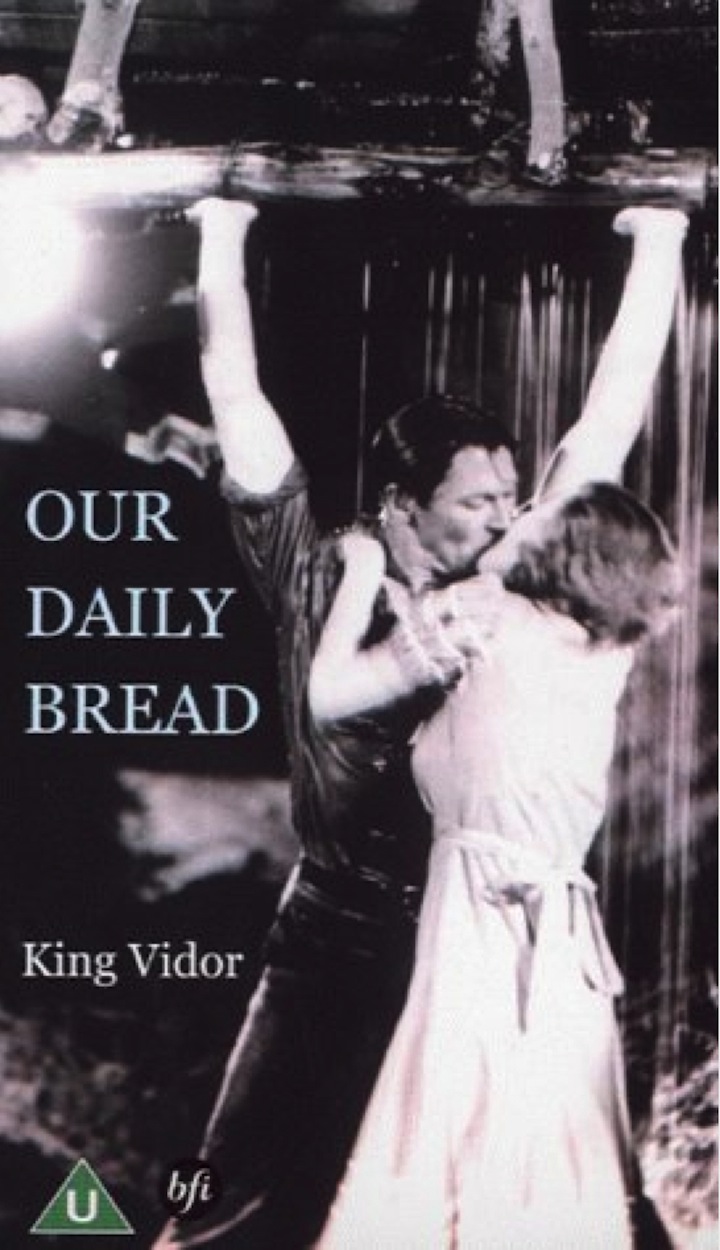
King Vidor’s radical departure from Hollywood’s escapist approach to the Great Depression dramatized cooperative farming that pooled resources as an alternative to individualistic competition for jobs. The studios passed on his idea, so Vidor borrowed funds to finance the film himself, then caught flak for purportedly socialist ideas and fascistic traits. In its acclaimed climactic ditch-digging sequence, the film presents images celebrated muscular working-class manhood that also marked public art of the period, which addressed anxieties about the masculinity during the economic crisis.
Portrait of Jason (1967)
In one of the first LGBT films widely accepted by general audiences, Shirley Clarke explored the blurred lines between fact and fiction, allowing her subject, Jason Holliday, a gay hustler and nightclub entertainer, to talk about his life with candor, pathos, and humor in one 12-hour shoot. Bosley Crowther of The New York Times described it as a “curious and fascinating example of cinéma vérité, all the ramifications of which cannot be immediately known.” Legendary filmmaker Ingmar Bergman called it “the most extraordinary film I’ve seen in my life.” Thought to have been lost, a 16 mm print of the film was discovered at the Wisconsin Center for Film and Theater Research in 2013 and has since been restored by the Academy Film Archive, Milestone Films, and Modern Videofilm.
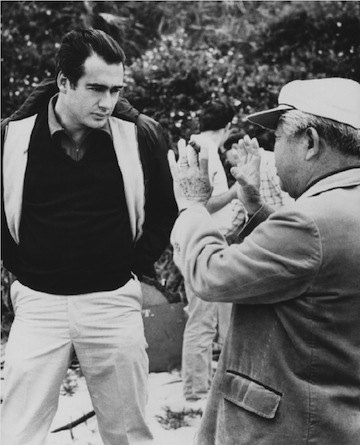
Rock Hudson in “Seconds.” Paramount Pictures
Seconds (1966)
Director John Frankenheimer and James Wong Howe’s black-and-white cinematography and disorienting camera angles craft a memorably creepy sense of foreboding in this evocation of evil organizations and the wasteland of suburbia. Bored with his banal marriage and unexciting daily grind, banker John Randolph meets the representative for a mysterious company offering the “too-good-to-be-true” opportunity to erase his current Scarsdale existence for a makeover in the guise of painter Rock Hudson in an idyllic Malibu. Critic David Sterritt praised Seconds as “the third and crowning chapter of what’s now known as Frankenheimer’s paranoia trilogy” following The Manchurian Candidate and Seven Days in May.
The Shawshank Redemption (1994)
In an adaptation of a Stephen King story, banker Tim Robbins is wrongly convicted of the double murder of his wife and her lover, but spends much of his prison sentence beset by guilt over whether he contributed to her infidelity and consumed by the knowledge that he had seriously contemplated murdering her. Eventually, Robbins decides he must “get busy living or get busy dying” and plots a meticulous, long-term plan for escape. He and a fellow inmate (Morgan Freeman) portray the abiding resilience of the human spirit.
Sink or Swim (1990)
In this autobiographical tale told in voice-over by a teenage girl (Jessica Lynn), Su Friedrich relates a series of 26 short vignettes that reveal a subtext of a father preoccupied by his career and of a daughter emotionally scarred by his behavior. Black-and-white film clips of ordinary daily activities illustrate Friedrich’s poetically powerful text to create a complex and intense film. Michael Zyrd wrote in Senses of Cinema: “The textures, cinematic and emotional, of Friedrich’s work are both private and highly mediated, embodying an aesthetic style and range of concerns that make her one of the most innovative and accessible artists currently working in the dynamic tradition of the modernist American Avant-Garde.”
The Story of Menstruation (1946)
Sponsored by Kimberly-Clark, the makers of Kotex, this title was produced by the Walt Disney Company through its Educational and Industrial Film Division. Distributed free to schools and girls’ clubs, the film used friendly Disney-style characters and gentle narration to “encourage a healthy, normal attitude” toward menstruation. It was seen as progressive for replacing superstitions with “scientific facts” and for dispelling embarrassment. Today, scholars aren’t so generous about a film that some 93 million American women, mostly teenagers, viewed between 1946 through the late 1960s.
Symbiopsychotaxiplasm: Take One (1968)
William Greaves, an original co-host and producer of the landmark Black Journal public television series, is perhaps best known for his prolific work as a documentary director and producer of more than 200 productions. He shot this, his best-known film, in 1968 and completed production in 1971 in hopes of a debut at the Cannes Film Festival, but was turned down. The film then spent two decades unseen before being rediscovered by a Brooklyn Museum curator who premiered it at a retrospective of Greaves’ voluminous work in cinema. In a 1960s’ time capsule, the African-American filmmaker and his multi-racial crew examined the myriad tensions involved in film creation with three camera crews recording different parts of the process and personalities involved. An on-set rebellion becomes the film’s platform for sociopolitical critique and revolutionary philosophy. It was filmed on location in New York City’s Central Park with a score by Miles Davis. The New York Times’ A.O. Scott called it “one of the great New York films, one of the great experimental films, one of the great ’60s films, one of the great black films—just one of the great films, period, largely because it remains so fresh, so radical and so hard to assimilate more than 45 years after it was made.”
Top Gun (1986)
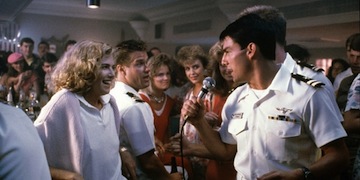
Paramount Pictures
Tony Scott directed this Don Simpson/Jerry Bruckheimer production, a deft portrait of mid-1980s America. While politicians promised “Morning in America Again,” and singers crooned “God Bless the U.S.A.,” the U.S. Navy enjoyed soaring applications to its aviation schools thanks to this pulsating film famed for its vertiginous fighter-plane sequences. The film jetted Tom Cruise to the top echelon of in-demand actors..
Winchester ’73 (1950)
Actor Jimmy Stewart collaborated with director Anthony Mann on eight films during the 1950s. Most renowned was an influential series of five taut, psychological Westerns from 1950-55 revolving around themes of hidden secrets, vengeance, shifting personal morals and concepts of heroism. Winchester ’73 launched their partnership. Film historian Scott Simmon calls it “the film where a gun is more of an object of worship than in any other American film,” even though, in it, nobody was allowed to carry a gun in town. Stewart obsessively quests to avenge the death of his father and pursue a Winchester rifle as it moves from one owner to the next, changing everyone into whose hands it briefly passes, culminating in a famous shootout amidst rocky terrain.
Previous Post: Robert Altman's Compelling Early Cornball, Preserved
Next Post: Ken Jacobs's Dissected Doctor’s Dream



